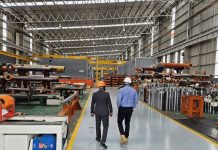Did you know that advances in mining technology mean that you can now grow gold and copper next to your tomatoes and maize? This is not science-fiction or the speculation of a wild-eyed scientist, but technology which is being used today, in a number of countries around the world.
Certain plants can absorb minerals from the soil, and these plants can then be harvested and processed and the minerals can be extracted. This process is called agro-mining, and is increasingly being seen as a new way to access ore.
The technology is not particularly new – it has been tested over the past 20 years and has proved to be a sustainable way of extracting minerals. Agro-mining involves the use of particular plants (called hyperaccumulator plants) which can, given the right conditions, contain up to 5 kg of a mineral. These plants are grown on mine dumps or on land where it is difficult to mine using traditional mining techniques.
These hyperaccumulator plants already grow naturally in what is known as serpentine soil, in Turkey and the Balkans. This type of soil is not suitable for agriculture, but is rich in certain minerals.
Certain plants can absorb minerals from the soil, and are already being used to rehabilitate mine-dumps
In an interview with Mining Weekly, Stephen Haggerty, a professor at Florida State University, says that Australia leads the world in agro-mining, but other countries are starting to follow. Australia was using the technique in mined-out nickel belts. “They get nuggets of nickel metal out of it,” the South African-born Haggerty says. He adds that in some former gold-producing areas in Australia, eucalyptus trees are also being used to harvest leftover deposits of gold.
The economic benefits of agro-mining (also called phytomining) could be enormous. Dr Antony van Ent, of the University of Queensland in Australia says: “Phytomining trials have yielded up to 200 kg of nickel per hectare per year, establishing a potential opportunity and income stream for future metal farmers in developing countries.”
Agro-mining is already being used to rehabilitate some mining areas where plants are used to help pull heavy metals out of the soil, but it is not widespread in the mining industry yet. Van Ent says that work over the past 20 years had proved that the technology works, but that it has yet to be adopted on a widespread scale by the mining industry. “Industry needs to be encouraged to adopt new technologies that have the potential to improve mine site rehabilitation outcomes and opportunities, especially in developing countries in the tropics,” says Van Ent.

The technique could be well-suited to Zambia. Agro-mining works well with copper (which Zambia is a major producer of), as well as cobalt, which is a by-product of copper mining. As Van Ent says, it would work well in developing countries in the tropics, so Zambia is a prime candidate for the roll-out of the technology. Furthermore, it could provide income to farmers, while at the same time helping to environmentally rehabilitate areas that have been damaged by mining.
As mining companies consider new ways to extract copper and rehabilitate areas damaged by mining, it is likely that agro-mining will become more common. Zambia should look to take advantage of this technique, which marries two of Zambia’s traditional strengths – mining and agriculture.
See also: Diesel fuel from trees























